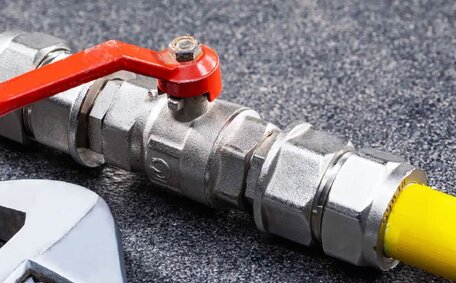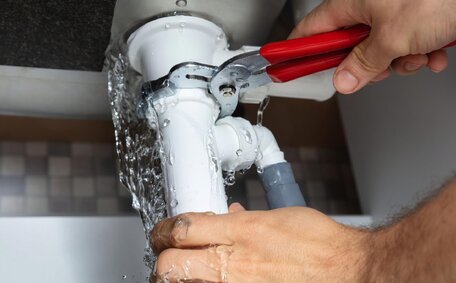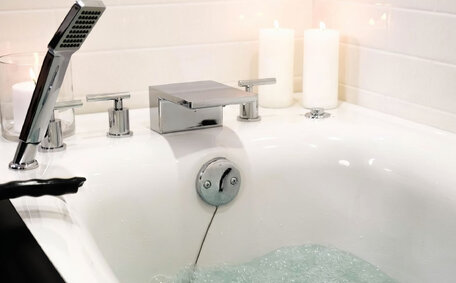Introduction to Modern Gas Appliance Technologies
Gas appliances play an integral role in the lives of many gas customers in Australian households, providing essential services like heating, hot water, and cooking. However, many gas appliances in Australian households still depend on natural gas derived from fossil fuels, leading to significant greenhouse gas emissions.
The gas appliance industry is acknowledging this by pivoting towards more sustainable, environmentally friendly alternatives. Contemporary appliances are now being designed for compatibility with renewable fuels such as green hydrogen and biomethane. These alternatives could slash gas-related emissions considerably, by up to 80%.
Beyond renewable gas, there is also a gradual transition happening towards electrical appliances like heat pumps, induction cooktops, and electric hot water systems powered by renewable energy sources. Despite their higher initial cost, these electric alternatives prove to be immensely energy efficient over time.
This article explores the latest advancements in the gas appliance space - from innovative technologies and government policies to practical considerations around safety, energy savings, and going renewable or electric. Read on to learn how modern gas appliances can enable a smooth transition into a net zero emissions future, both for homes and businesses.
Improving Efficiency and Safety
Modern gas hot water systems incorporate advanced technologies to enhance efficiency and safety compared to traditional models.
Enhanced burner configurations and superior insulation contribute to better heat retention, thus reducing gas consumption. Electronic ignitions remove the necessity for a continuously lit pilot light, enhancing efficiency even more.
Safety has also markedly improved. Upgraded air-to-gas mixers, automatic shut-off controls, and temperature-regulating valves mitigate risks such as gas leaks and fires, safeguarding your hot water heating systems. Upgraded ventilation systems mitigate health hazards like exposure to nitrogen dioxide or carbon monoxide.
Transitioning to newer appliances offers benefits such as potentially moving your home off gas, along with environmental and economic advantages. Reverse cycle hot water systems, an electric heat alternative, can cost around $300 annually to run, while the traditional gas heating system could cost $400 or more annually. Identifying money-saving strategies, like balancing higher initial purchase costs against long-term energy savings, makes appliance upgrades more appealing.
Of course, all gas works must comply with safety regulations. Converting to renewable gases or integrating technologies like hydronic heating requires professional installation and certification. Thus, when considering an upgrade, it’s vital to engage accredited professionals to guarantee safety and adherence to regulations.
Smart Capabilities and Features
Modern gas appliances are integrating smart technologies that offer exciting new capabilities.
A variety of contemporary gas stove and hot water systems are now equipped with integrated Wi-Fi connectivity. This allows remote monitoring and control via smartphone apps - adjusting temperature settings, scheduling operation times, monitoring gas usage, and more.
Internet of Things-enabled appliances also offer integration with home energy management and smart grid systems. For instance, a smart hot water system can regulate its operation to coincide with peak solar generation periods or more cost-effective electricity tariffs.
Nonetheless, the connectivity of these appliances also introduces potential cybersecurity challenges. Internet-enabled gas systems could be vulnerable to hacking, data breaches or remote tampering. Hence, implementing cyber protections and data privacy frameworks is crucial.
Overall, smart gas appliances deliver enhanced control, efficiency, and potential for integration. With appropriate cybersecurity measures in place, they offer both convenience and sustainability advantages over traditional models.
Troubleshooting Common Gas Appliance Problems
Some of the most common issues with modern gas appliances include:
Persistent Pilot Light Issues
If your appliance’s pilot light keeps shutting off, there may be a problem with the thermocouple sensor. A qualified technician can efficiently replace malfunctioning thermocouple components.
Burner Flames Appearing Abnormal
Yellow or orange flames, instead of the blue expected, suggest impurities or obstructions in the gas line. Only a licenced technician should adjust or fix gas burners.
Gas Leaks
If you detect the smell of gas, immediately turn off appliance valves and ventilate the area. It’s vital to avoid using open flames to search for leaks. Call professionals to inspect pipe joints, valves and seals using leak detection fluids.
Ignition Failure
If burners fail to ignite, it usually signals worn out igniter components. A technician can assess issues with electrode wiring, ignition control modules or pilot assembly alignment.
While troubleshooting gas appliances can be complicated, new diagnostic computer systems, electronic controls and remote monitoring capabilities make the process much easier. Therefore, enlist the help of qualified professionals without delay when needed.
Transitioning to Renewable Fuels
There is a major global push to transition from fossil fuel-derived natural gas towards renewable alternatives like green hydrogen or biomethane.
Hydrogen natural gas can be produced through electrolysis, a cycle air process powered by renewable energy sources.
The gas utilities sector is already taking proactive steps to enable this transition. Modern gas stoves, hot water heaters and space heaters are designed and certified to be compatible with hydrogen blends and bio-methane. Some models can operate on 100 renewable gas without any modifications.
For consumers in an existing home, transitioning gas systems to renewable fuels may require upgrades like nozzle adjustments and control system recalibrations. Professional technicians can manage this seamlessly. The costs for this transition are competitive with, or slightly higher than, those of traditional natural gas.
As energy networks gradually integrate renewables like green hydrogen into their pipelines, homes and businesses will be able to effortlessly switch over to sustainable energy for gas appliances. This supports emissions reductions targets as well as provides longevity to gas infrastructure investments.
The Potential of Hydrogen
Hydrogen has enormous potential as a renewable gas alternative which can significantly reduce emissions. When used in fuel cells or burned for energy, Unlike fossil fuels, hydrogen combustion only yields water vapour, not greenhouse gases.
Current pioneering initiatives are exploring the integration of hydrogen into existing Australian gas networks. Trials by Australian Gas Infrastructure Group and Australian Gas Networks aim to establish the feasibility of eventually transitioning to 100% renewable hydrogen gas.
Utilising hydrogen has the potential to render gas appliances nearly emission-free, yet maintaining instant heating and recognised functionality within a connected gas infrastructure. For consumers, the switch would be invisible, with existing pipes and appliances remaining compatible.
However, Green hydrogen production hinges upon a plentiful supply of renewable electricity. Expanding solar and wind capacity is key to making hydrogen an economically and environmentally sound fuel option. We need supportive policies that will be vital to scale up hydrogen and make the transition affordable.
As renewable energy costs decrease and government investments target this area, a hydrogen-powered future for residential and industrial sectors might be on the horizon sooner than expected.
Biomethane and Other Alternatives
Biomethane, also known as renewable natural gas, is a sustainable alternative produced from organic waste materials. As bacteria breaks down waste in an anaerobic digester, Biomethane is harvested and refined to match conventional natural gas in quality.
Biomethane, once stored existing, can be directly injected into gas networks without any modifications required. Gas appliances running on biomethane provide the same instant heating and functionality while reducing emissions by up to 125kg CO2-e per MWh - eliminating the need to fully electrify systems.
Other leading renewable gas options include synthetic methane produced through combining renewable hydrogen with carbon dioxide, or upgrading landfill gas capture systems into higher purity fuels. Such alternatives are projected to supply much more than 10% of eastern Australia’s annual gas needs by 2040.
Renewable gases like biomethane allow households and businesses to reduce their carbon footprint while retaining the convenience of gas appliances. As production scales up locally, they will become more cost competitive with fossil fuel gas, further accelerating adoption.
The Move Toward Electrification
An accelerating shift worldwide from gas appliances to electrification, powered by renewable energy, is underway.
Technologies such as heat pumps, induction cooktops, and electric water systems epitomise advanced, cost-effective solutions for cooking and heating over the long term. Heat pumps, notable for their cost-effectiveness and efficiency, typically operate at about a third of the cost of gas heating, potentially reducing home energy bills by more than $1000 annually.
This energy transition is being driven by factors like climate change targets, health concerns around gas combustion indoor air pollution, and favourable economics as electricity prices fall while gas prices are projected to rise.
Federal and state energy minister policies are also promoting this move to electrification through rebates and incentive schemes. For example, the NSW government recently announced interest-free loans up to $9000 for households to assist in replacing gas appliances.
While gas may continue playing a transitional role with renewable fuels, economics and sustainability considerations mean that the era of new gas connections is coming to an end. The future is increasingly electric for water and space heating, cooking and other appliance needs.
Heat Pumps for Hot Water
Heat pump hot water systems are an efficient electric alternative to traditional gas or electric storage tanks. Heat pumps extract heat from ambient air and use a refrigeration cycle to concentrate this warmth to heat water.
Modern heat pumps, embodying reverse cycle air technology, can reduce energy usage by up to 60% compared to conventional electric systems and lower bills by around $300 per year. They work more efficiently in warmer climates, making them well-suited for Australian homes. Maintenance costs are also minimal without a burner or flue.
Heat pumps may have higher upfront expenses, but governmental rebates along with long-term savings make them an attractive option. Additionally, as renewable solar and wind generation expands, heat pump operation becomes even more emissions-free. For homeowners seeking to cut energy costs and environmental footprint, gas hot and electric heat pumps represent the new gold standard for water heating solutions.
Induction Cooktops
Induction cooktops are heralded for their energy efficiency, ranking as one of the most efficient electric cooking technologies available. Induction cooktops heat up pots and pans with electromagnetic energy directly, rather than heating the cooktop surface itself.
This confers upon induction cooking exceptional speed, precision, and energy efficiency. Burner temperatures can be rapidly raised or lowered as needed. There is also no wasted residual heat or fuel emissions released into kitchens during cooking.
Induction tops today have similar if not lower price points compared to quality gas cooktops. They are also cheaper to operate - using around half the energy of gas cooking. This translates into over $100 annual savings on energy bills for the average household.
From a sustainability perspective, pairing induction cooking with renewable electricity such as rooftop solar results in zero greenhouse gas emissions. This contrasts sharply with gas stoves, which generate emissions both on-site and upstream during gas extraction and transport.
Induction cooktops combine the convenience of easy cleaning procedures, safety of cool-to-touch surfaces, and efficiency of precise temperature control and timers into one package. Rapid-response performance rivals gas cooking, while enhancing indoor air quality by avoiding the pollution issues posed by burning fuels.
For most homeowners seeking a cleaner and more cost-effective cooking solution without sacrificing performance, induction cooktops represent the new gold standard over outdated gas burner technology.
Conclusion: The Future of Gas Appliances
Modern gas appliance technologies offer significant advancements in efficiency, safety, sustainability, and functionality compared to traditional models. Transitioning to green hydrogen and other renewable fuels or adopting electrified solutions like heat pumps and induction cooktops allows households and businesses to significantly lower emissions while enjoying the convenience of contemporary gas appliances.
With supportive government policies and the advent of new energy technologies, upgrading to these innovative appliances is becoming increasingly viable and attractive. The long-term savings and environmental benefits make it a sensible investment.
As gas networks integrate renewables and more households go electric, gas appliances are poised for a revolution. The future is bright for technologies that align with net zero emissions goals, energy affordability and consumer expectations.
For customised guidance on upgrading your home or business with modern gas appliances, reach out to Mosman Plumbing specialists today by email, phone, or our online booking form.






